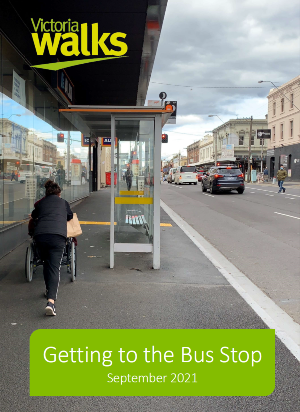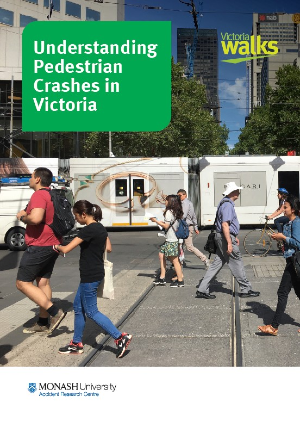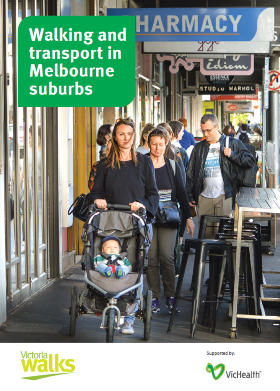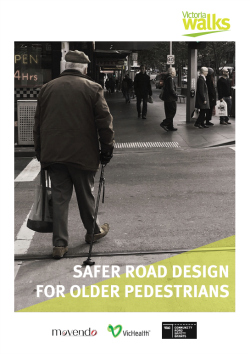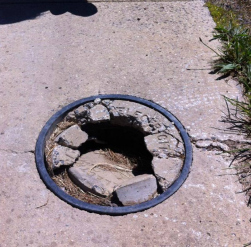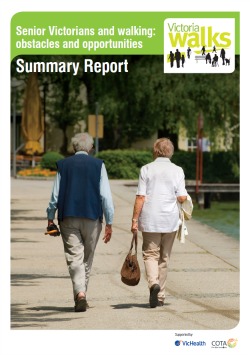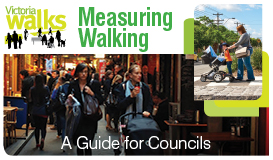Victoria Walks' research
- Walking and transport in Melbourne (2023)
- Public lighting (2022)
- Victorian Walking Survey (2022)
- Walking to bus stops (2021)
- Pedestrian road crashes (2020)
- Walking and transport in Melbourne suburbs (2019)
- The economic case for investment in walking (2018)
- Footpath cycling (2018)
- Creating Accessible Centres and Connected Stations (2018)
- Young people and walking (2017)
- WalkSpot (2017)
- Level crossing removal and railway projects (2016)
- Safer Road Design for Older Pedestrians (2016)
- Falls in the street (2016)
- Shared paths (2015)
- Seniors and walking (2013)
- Other Victoria Walks tools and research
Victoria Walks often reports on research by others - see our news items or professionals section.
We also undertake or commission our own research, as shown here.
Walking and transport in Melbourne (2023)
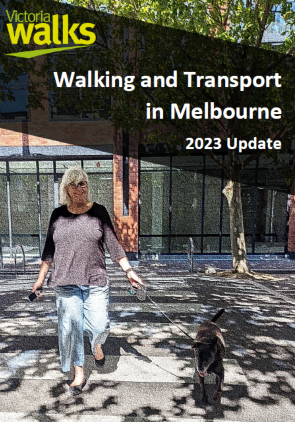
This research explores recent trends in walking and transport in Melbourne, utilising data from the Victorian Integrated Survey of Travel and Activity (VISTA)
Walking has increased to 22.9% of trips in 2020/21, surpassing vehicle passenger as the second most common way of getting around (after vehicle driver). This seems to be a long term trend reinforced by the pandemic, but largely caused by an increase in recreational walking trips. If recreation is excluded, walking makes up a much lower proportion of trips – around 15%.
The report includes more detailed analysis of how children and young people get around.
This work provides something of an update on our earlier report Walking and Transport in Melbourne Suburbs (2019). However, that report also provided information from a number of other sources to give a broader picture of walking and its role in the transport system.
Public lighting (2022)
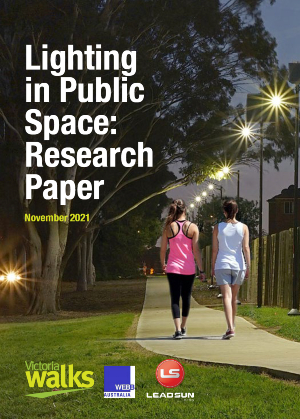
Victoria Walks was commissioned by solar lighting providers Leadsun to explore the connection between lighting and walking.
Our report, prepared with input from expert lighting engineers Webb Australia, considers the evidence around the need for appropriate lighting at night in public spaces. With a focus on areas for informal use that are not covered by streetlight, it also considers locations where lighting is most beneficial and how this should be delivered.
Studies have found that better street lighting can result in more people walking and that people avoid walking in parks at night if they are not well lit. Many studies have found that good lighting is related to increased feelings of safety.
Public lighting is an equity issue, as it is particularly important for women and older people.
Victorian Walking Survey (2022)
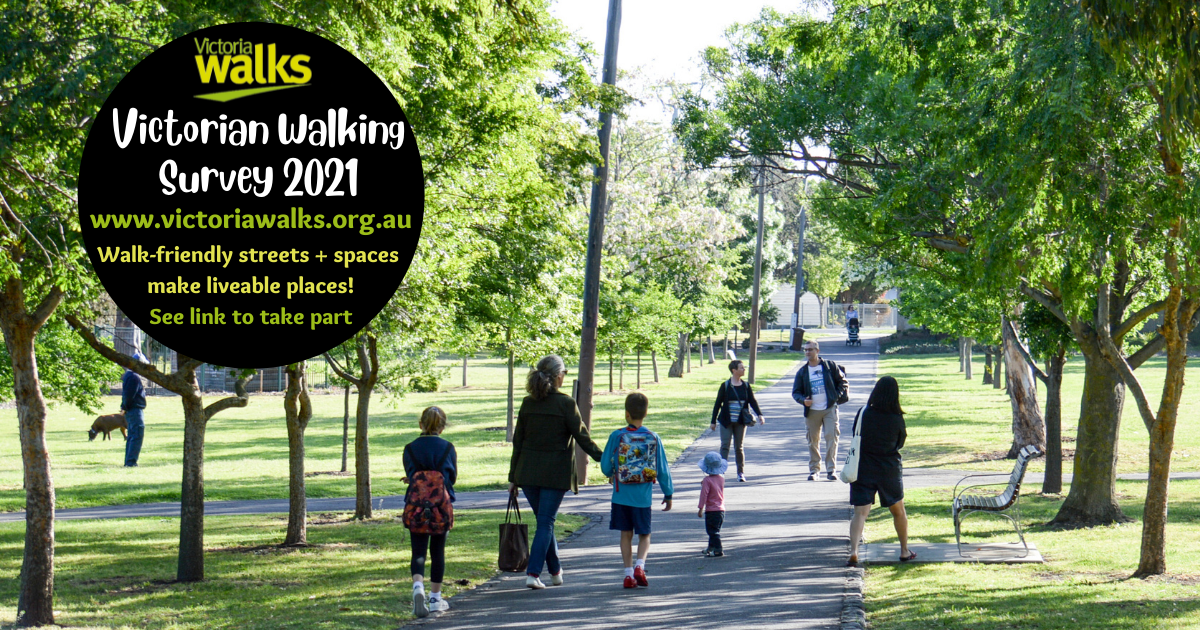
The Victorian Walking Survey was conducted in November and December 2021 and the results were released in 2022.
The survey was completed by a total of 2,372 Victorians of voting age.
When asked “which of the following would help you walk more in your local area?” the highest rating responses were:
- Improving footpaths (49%)
- Providing separate walking paths from bike paths (46%)
- Building footpaths where they are missing (44%), and particularly for Regional Victorians (57%)
- More or better paths in parks or along waterways (44%)
- More street trees (41%).
Most survey participants believe the government should provide pedestrian facilities to improve walking in their local area.
The survey results were used to help develop Investing in Walking – a step forward for Victoria’s environment, economy and health, Victoria Walks’ proposals for government action.
Walking to bus stops (2021)
This report – Getting to the Bus Stop – provides a comprehensive analysis of the safety and amenity of access to bus stops in Victoria. It is based on a range of sources, including a survey of over 400 Victorian bus users and audits of 70 bus stops in Melbourne and regional towns and cities.
Notable findings include:
- Bus users tend to be younger than the general population, with a third aged between 10 and 19.
- Bus stop audits found that 60% of bus stops were located on higher speed urban roads with a limit of 60-80 km/h, but only 5% of audited stops on higher speed roads had a pedestrian crossing at the stop.
- Two in five audited stops (41%) were located on roads where a person would have to cross at least four lanes of traffic.
- More than one third (36%) of the audited bus stops did not have any ramp access – kerb ramps or driveways – within 50 metres.
Pedestrian road crashes (2020)
With the support of a TAC Community Road Safety Grant, Victoria Walks commissioned the Monash University Accident Research Centre (MUARC) to undertake a detailed analysis of road crashes affecting pedestrians.
The result is probably the most comprehensive picture of pedestrian crashes ever produced in Victoria. MUARC analysed ten years of Police, hospital and cause of death data in addition to a range of other sources to gain the strongest possible understanding of pedestrian crashes.
More than 2,000 pedestrians are admitted or present to hospital Emergency Departments every year.
Police reported the driver as offending in 46.4% of collisions, while 35.5% were not considered to be offending and for 18.1% this was not known or reported.
The majority of crashes occurred on roads with a speed limit of 60 km/h (31.0%) or 50 km/h (29.8%).
Trends in overall injury rates varied across the data sets. Police reported data showed a decline in crashes, but there was little change in the hospital data.
Walking and transport in Melbourne suburbs (2019)
This report looks at how people travel around Melbourne, with a particular focus on the role of walking and access to suburban shopping areas.
Key findings include:
- About 16% of trips in Melbourne are walked and an additional 8% have at least one walking stage (usually combined with public transport).
- Walking is critical for public transport, with almost half of passengers walking from home to railway stations (about a third come by car) and 94% of trips to bus and tram stops are walked.
- Generally speaking, the proportion of people walking to inner suburban centres is similar to those driving, with public transport the other key access mode. However, traders are more likely to drive and over-estimate the proportion of their customers who come via car.
- In the middle and outer suburbs, it is 3.5 times more likely that a trip to a mainstreet style strip centre will be walked than to a car-oriented centre.
The economic case for investment in walking (2018)
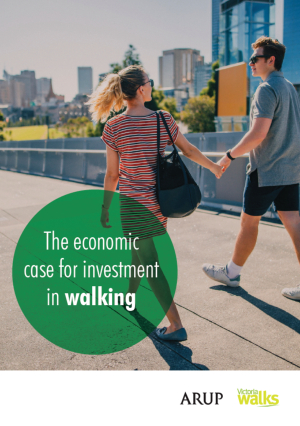
A collaboration with global consultancy firm Arup, this report outlines the benefits of walking, along with the role it plays in transport, recreation and health. The report then analyses how transport investment frameworks apply to pedestrian projects, to help us understand why walking seems to fall through the cracks.
Walking already accounts for 1 in 6 of Melbourne’s weekday trips, but there are opportunities for many more. If half of short private vehicle trips (0-0.9 km) in Melbourne and Geelong were converted to walking, there would be 2.4 million fewer vehicle trips each week.
Arup found walking has been overlooked as a potential investment and underplayed in city-shaping projects. For example, most train trips start and end with walking, but the economic evaluation for projects such as Melbourne Metro have not included walking.
Walking is also the most popular recreational activity, with over one million participants in Victoria, but government investment in sport and recreation tends to go to organised sport.
Footpath cycling (2018)
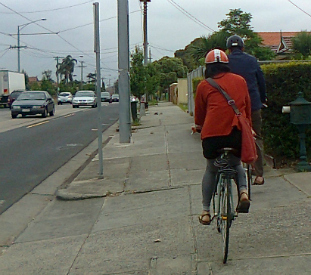
Victoria Walks commissioned transport consultants MRCagney to review the existing research and evidence on footpath cycling.
Some of the key findings of the report include:
“… crash risks for cyclists may be higher on the footpath than on the road.”
“…the presence of cyclists on footpaths is a real concern for people walking, particularly for elderly or other vulnerable users such as the vision impaired.”
Victoria Walks, the Council On The Ageing (Vic) and Vision Australia are calling upon politicians to ignore cycling lobbyists’ calls to allow teenagers and adults to ride on footpaths in Victoria.
Creating Accessible Centres and Connected Stations (2018)
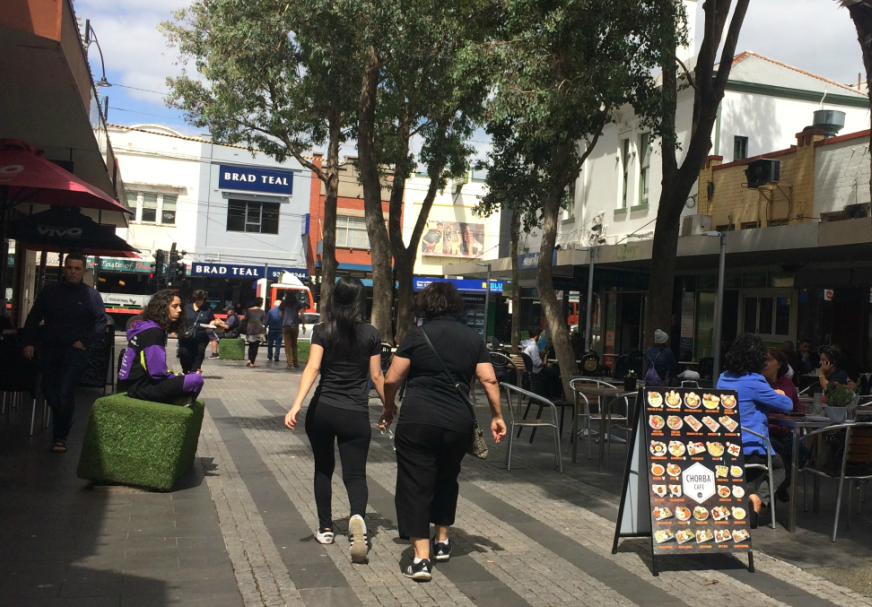
Interesting ‘Main Street’ shopping strips are great features of Melbourne. Places like Brunswick Street, Sydney Road and Acland Street are famous examples, but most established suburbs have their own traditional shopping streets at the heart of the community. While these vibrant, local shopping streets have stood the test of time, they now face significant threats from online retailing, as well as continuing competition from shopping malls.
In One step ahead… Planning for Accessible Centres and Connected Stations, urban access consultant Dr David Mepham explores practical ways for local councils to create attractive, accessible, connected Main Streets.
Young people and walking (2017)
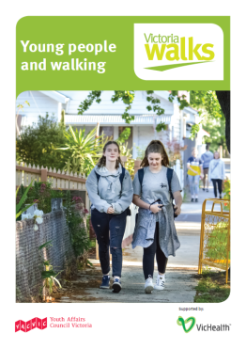
In collaboration with the Youth Affairs Council of Victoria, and funded by VicHealth, Victoria Walks took a detailed look at the issues surrounding walking for young people.
We commissioned Dr Jan Garrard from Deakin University to produce the report Young People and Walking. The project involved a desktop literature review, five focus group discussions and an online survey of 1089 people in Victoria aged 15 – 20 years (75% female).
Two reports on the research are available:
- The summary report (50 pages) provides an overview of the research.
- The full project report (178 pages) provides comprehensive detail on all aspects of the study.
For a visual illustration of the key findings, check out our infographics.
WalkSpot (2017)
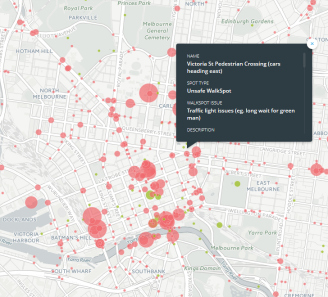
Victoria Walks worked with the State Government and local councils to crowdsource opinions on walking around Melbourne, in a ground-breaking approach to understanding road safety.
We asked people to indicate their walking safety concerns through an interactive online map, hosted by internet engagement specialists CrowdSpot. People could indicate concerns like a lack of pedestrian crossings, poor street lighting, high traffic speed, or footpath problems.
A lack of pedestrian crossings emerged as the number one concern for people walking around Melbourne. Other issues included drivers failing to give way when turning, traffic moving too fast, problems with footpaths, and traffic light problems like a long wait for the green man. More here, including a link to the report.
Level crossing removal and railway projects (2016)
.jpg)
The removal of level crossings is one of Victoria's largest infrastructure programs - $2.4 billion in 2015/16 alone.
But what does this mean for people walking to train stations, or in the neighbourhoods around the train line?
Victoria Walks asked Dr David Mepham, Director at DMC, to explore the issues and prepare the report Planning for Pedestrian Accessibility at Level Crossings and Railway Stations. This research examines a selection of existing stations and previous level crossing removal projects, and concept planning for elevated rail on the Pakenham-Cranbourne line, in order to draw lessons for this and future rail projects.
Safer Road Design for Older Pedestrians (2016)
This research identifies ways for road managers to provide safer street environments, based on analysis of more than 1,000 crashes affecting older pedestrians.
Older pedestrians experience an average of 17 fatalities, 147 serious injuries and 114 other injuries in Victoria each year, with an estimated economic cost of $110 million.
Having considered the evidence from around the World and the Victorian crash statistics, the report recommends infrastructure treatments to provide safer streets. For a quick summary of the issues and design options for key locations, separate factsheets have also been developed.
More recently, Victoria Walks undertook a summary Analysis of Crashes Involving Pedestrians, with a focus on the five year period 2013-2017.
Falls in the street (2016)
This research looked at hospital presentations and admissions from falls in the street, typically overlooked in the road safety debate. It was undertaken by the Monash University Accident Research Centre in conjunction with Victoria Walks and funded by VicHealth.
The research found that trips and falls in the street send over 5,000 pedestrians to hospital each year – even more than collisions with cars. It is the first Australian work to take a detailed looked at the issue.
Shared paths (2015)
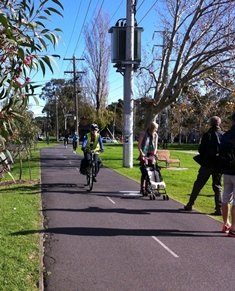
Shared paths are commonly built for both bike riders and walkers, but they can be an uncomfortable place to walk, especially for children, disabled or older people.
Victoria Walks developed a comprehensive research paper, Shared paths – the issues, based on a literature review and stakeholder consultation with subject experts, VicRoads and 18 local councils. This provides the basis for our short position statement Shared paths – finding solutions.
The research paper and position statement set out recommendations for infrastructure that work for both walkers and cyclists.
Victoria Walks also developed a position statement on proposals to allow more cycling on footpaths.
Seniors and walking (2013)
Victoria Walks contracted Dr Jan Garrard to conduct a comprehensive study of the barriers and enablers for seniors’ walking for transport and recreation.
The study was conducted in partnership with COTA (Council on the Ageing) Victoria and included:
- A survey of 1128 senior Victorians
- Eight focus group discussions
- A literature review of supports and constraints on walking by seniors
- Analysis of seniors walking data from the Victorian Integrated Survey of Travel and Activity.
Dr Garrard produced a very comprehensive full report and a shorter summary report.
Other Victoria Walks tools and research
In December 2018, Victoria Walks undertook an Analysis of Crashes Involving Pedestrians, with a focus on the five year period 2013-2017.
Victoria Walks has also developed detailed tools and guideline documents, aimed primarily at councils, on:
- Developing a walking strategy
- Measuring walking
- Auditing streets for pedestrians who have impaired vision.
